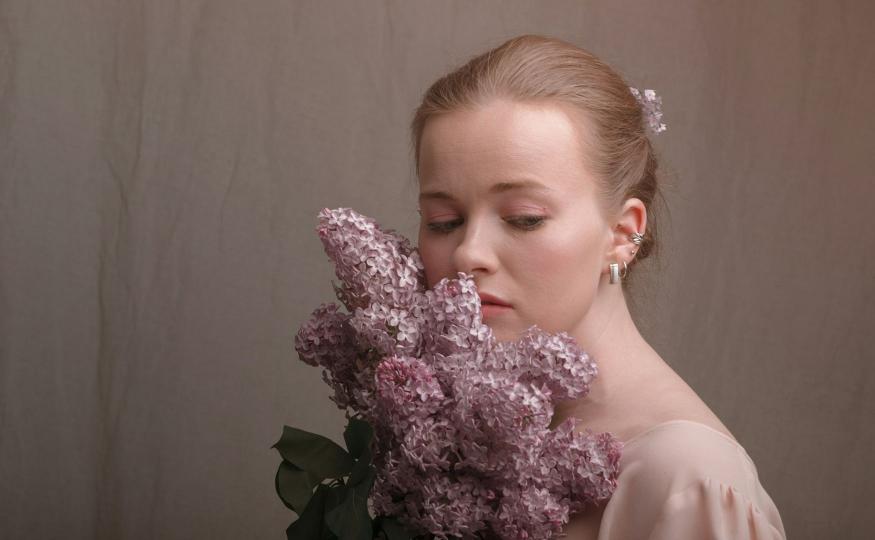
Flowers are beautiful, no doubt—but did you know that they also speak their secret language?
Welcome to the captivating world of floriography, a practice that assigns meanings to flowers. It’s a time-honored tradition that goes beyond petals and perfume, allowing blooms to whisper sentiments of love, sorrow, celebration, and everything in between—without ever saying a word.
In this guide, we’ll dig into the powerful meanings behind your favorite flowers, explore the history of floriography, and show you how to craft flower messages that truly touch the heart.
🌼 What Is Floriography?
Floriography is the symbolic communication using flowers. It assigns emotional or moral meanings to different blooms, so people can express feelings subtly—especially when words fall short.
From ancient times to Victorian England and into modern flower arrangements, floriography has helped lovers, friends, and families communicate secret messages through carefully selected floral arrangements.
Imagine receiving a bouquet not just because it’s pretty, but because every flower in it tells a unique story—how romantic is that?
📜 A Brief History of Floriography
While the idea of flower symbolism dates back to ancient civilizations like Egypt, Greece, and China, floriography really blossomed during the Victorian Era (1800s).
Why? Because strict social etiquette discouraged open expressions of emotion—especially romantic ones. So people turned to flowers. A red rose meant passionate love. A yellow rose? Jealousy. A sprig of lavender could symbolize loyalty, while a daffodil might hint at unrequited admiration.
Victorians even carried flower dictionaries, which listed hundreds of blooms and their meanings. Today, these ideas still echo in our bouquets and wedding choices—even if we don’t realize it.
🌷 The Hidden Messages of Popular Flowers
Here are some of the most meaningful flowers and what they traditionally symbolize:
🌹 Red Rose: Love, passion
🌹 White Rose: Purity, innocence
🌹 Yellow Rose: Friendship, jealousy (Victorian era)
🌻 Sunflower: Loyalty, adoration
💐 Peony: Prosperity, romance, bashfulness
🌸 Cherry Blossom: Beauty, fleeting life
💐 Lily: Elegance, purity, renewal
💐 Carnation: Fascination, distinction, maternal love
🌼 Daisy: Innocence, new beginnings
💐 Tulip: Perfect love, confidence
Want to be bolder? Black roses mean rebellion or farewell, and blue flowers often symbolize mystery, the unattainable, or dreams.
💌 How to Create a Floriography Bouquet
Eager to wield your floral wisdom? Here’s how to design a bouquet that speaks straight from the heart:
1. Start With Intent
Reflect for a moment: What feeling or message do you wish to express?
2. Choose Meaningful Flowers
Pick blooms based on their symbolism. For example, a mix of red tulips (declaration of love) and white lilies (purity) could say: “I love you sincerely.”
3. Add Filler Flowers with Purpose
Even small touches matter. Baby’s breath? Everlasting love. Ivy? Friendship and loyalty.
4. Use Color Symbolism
Colors carry weight in floriography too. Think red for love, white for honesty, yellow for joy, and purple for admiration or mystery.
5. Include a Note (Optional)
Sometimes, you want to let the recipient in on the secret. Include a brief explanation: “Each flower represents how I feel for you.”
📚 Victorian vs. Modern Floriography
Modern florists often simplify floriography—focusing more on general meanings or aesthetics. But traditional Victorian floriography went deep. For instance:
• Marigold = Grief or jealousy
• Snapdragon = Graciousness or deception
• Hyacinth = Sport, play, or sometimes sorrow
• Zinnia = Thoughts of absent friends
While not all of these meanings are still in common use today, they add a rich layer of storytelling to your arrangements if you want to create something truly personal.
🌎 Floriography Around the World
Floriography isn’t just Victorian—it’s global.
• Japan has Hanakotoba, the Japanese language of flowers. Red camellias mean “love,” but yellow ones signify jealousy.
• Turkey and the Middle East have long used roses and tulips in romantic expression.
• In Indonesia, jasmine (melati) is a symbol of purity and sacredness, often used in weddings.
Different countries assign slightly different meanings, so it’s always good to check the cultural context before crafting your bouquet.
🎉 Occasions to Use Floriography
Floriography can make any event more special—and more meaningful. Here’s where it shines:
• 💘 Valentine’s Day – Skip the generic bouquet. Send flowers that say “I get you.”
• 👰 Weddings – Brides can carry flowers that reflect love, loyalty, and hope.
• 🎓 Graduations – Use flowers like daffodils (new beginnings) and iris (wisdom).
• 🕯️ Condolences – Send lilies (purity, peace) or chrysanthemums (grief and support).
• 🎁 Just Because – Sometimes a flower that says “thinking of you” is all it takes.
🌺 Why Floriography Still Matters Today
In our fast-paced digital world, floriography revives heartfelt meaning and mindful expression. A carefully chosen bouquet can say what an emoji or text can’t.
Whether you’re rekindling a romance, showing appreciation, or saying a silent sorry, flowers let your emotions bloom naturally, with timeless elegance.
Plus, let’s be honest—who wouldn’t feel moved receiving flowers that were chosen not just for their look, but for their meaning?
🛒 Where to Shop Meaningful Bouquets?
Looking for meaningful flowers that speak from the heart? Visit inbloom.id and explore our curated collections designed with floriography in mind.
Whether you want to express love, gratitude, friendship, or sympathy, we’ll help you pick the perfect bouquet with flowers that tell your story.
👉 Order now and let flowers say what words can’t. 🌼
🌟 Final Thoughts
Floriography is more than flower trivia—it’s a deeply emotional, artistic form of expression. From timeless love letters to today’s wedding vows, flower language has united hearts across eras and cultures. So when you exchange a bouquet, know this: it’s more than blooms you’re sharing.
So next time you give or receive a bouquet, remember: you’re not just sharing flowers. You’re sharing feelings, wrapped in petals.
